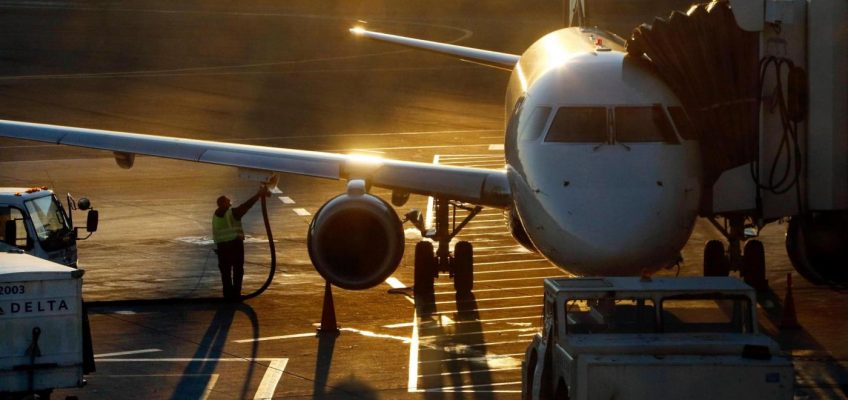WASHINGTON (AP) — The shooting of two West Virginia National Guard members in the nation’s capital has left some questions unanswered.
Officials say the suspect in Wednesday’s attack is an Afghan national, and some details have been released about the two Guard members, one of whom has died. The motive for the attack was not clear.
Here’s what we know so far and what we don’t know:
One National Guard member has died
President Donald Trump announced Thursday that Specialist Sarah Beckstrom, 20, had died from her injuries. Staff Sgt. Andrew Wolfe, 24, was in “very critical condition,” Gov. Patrick Morrisey, R-W.Va., said Friday.
They were deployed as part of Trump’s crime-fighting mission that involved taking over the District of Columbia’s police department. Beckstrom and Wolfe had been on orders in Washington since August, according to the West Virginia National Guard.
Beckstrom, of Summersville, West Virginia, had volunteered “to ensure the safety and security of our nation’s capital,” the Guard said in a statement. She graduated from Webster County High School in June 2023 and enlisted that month, serving “with distinction” as a military police officer, the Guard said. “She exemplified leadership, dedication, and professionalism.”
Wolfe, of Martinsburg, West Virginia, entered service in February 2019. He had graduated from Musselman High School in 2019, said Karla Troppman, a spokesperson for the Berkeley County Schools.
Principal Alicia Riggleman described him as “an active, engaged, and high-achieving student who embodied the Applemen spirit, contributing positively to our school community both academically and athletically.”
How the attack unfolded
Jeanine Pirro, the U.S. attorney in Washington, said the suspect, Rahmanullah Lakanwal, drove from Washington state to launch an “ambush-style” attack with a .357 Smith & Wesson revolver.
Video reviewed by investigators showed the assailant “came around the corner” and immediately started firing at the troops, according to Jeffery Carroll, an executive assistant police chief. Service members ran over and held down the shooter, who was taken into custody, he said. Authorities believe he was the only gunman.
Carroll said that it was not clear whether one of the Guard members or a law enforcement officer shot the suspect.
The suspect’s wounds were not believed to be life-threatening, officials said.
The suspect and his pathway to the US
Lakanwal, 29, entered the United States in 2021 through Operation Allies Welcome, officials said. That Biden administration program evacuated and resettled tens of thousands of Afghans after the U.S. withdrawal from the country.
Lakanwal applied for asylum during the Biden administration, but it was approved during the Trump administration, #AfghanEvac said in a statement.
Photos capture enduring enthusiasm for Black Friday, the biggest shopping day of the year
More snow, rain, and cold weather in store for post-Thanksgiving travelers
Suspect in shooting of National Guard members now facing a first-degree murder charge
US stocks rise on last trading day of November
Here’s what to know about the federal ban threatening the market for THC-infused drinks and snacks
Supporters have said there was extensive screening and that the program offered a lifeline to people at risk of Taliban reprisals.
The initiative brought roughly 76,000 people to the U.S. Many had worked alongside U.S. troops and diplomats as interpreters and translators.
The program has drawn intense criticism from Trump and other Republicans over what they have argued are gaps in the screening process and the speed of admissions.
Before arriving in the U.S., Lakanwal worked with the American government, including the CIA, “as a member of a partner force” in Kandahar, Afghanistan, CIA Director John Ratcliffe said.
Ratcliffe did not specify that work but said the relationship “ended shortly following the chaotic evacuation” of U.S. service members from Afghanistan.
A resident of the eastern Afghan province of Khost who identified himself as Lakanwal’s cousin said Lakanwal had worked in a special Afghan Army unit known as Zero Units. A former official from the unit said Lakanwal was a team leader and his brother was a platoon leader. Both spoke on condition of anonymity because of the sensitivity of the situation or for fear of reprisals.
Zero Units were paramilitary units with Afghans but backed by the CIA, and they also served in front-line fighting with CIA paramilitary officers. Activists had attributed abuses to the units. They provided security around Kabul International Airport in the Afghan capital as the Americans and others fell back during the Taliban offensive that seized the country.
The cousin said Lakanwal started out working as a security guard for the unit in 2012 and was later promoted to become a team leader and a GPS specialist.
Lakanwal’s former landlord, Kristina Widman, said Lakanwal had been living in Washington state with his wife and five children.
What charges the suspect faces
Pirro’s office said Friday that Lakanwal’s charges have been upgraded to include one count of first-degree murder, three counts of possession of a firearm during a crime of violence and two counts of assault with intent to kill while armed. The murder charge was added after Beckstrom’s death.
In an interview with Fox News, Pirro said Friday there are “many charges to come.” She declined to discuss the suspect’s motive, saying officials have been working around the clock on that question.
More National Guard troops
Soon after the shooting, Trump said he would send 500 more National Guard troops to Washington. It was not immediately not clear from where the additional troops would come.
There were nearly 2,200 Guard members from various states in the city. As of early November, the D.C. National Guard had the largest number on the ground, with 949 members. Louisiana, Mississippi, Ohio, South Carolina, Georgia and Alabama also had forces in the capital early this month, in addition to service members from West Virginia.
A federal judge last week ordered an end to the Guard deployment but also put her order on hold for 21 days to allow the Trump administration time to either remove the troops or appeal.
Associated Press journalists Collin Binkley, John Raby, Josh Boak, Alanna Durkin Richer, Eric Tucker, Michael R. Sisak, Mike Balsamo, Michael Biesecker, Anthony Izaguirre, Siddiqullah Alizai, Elena Becatoros and Jesse Bedayn contributed to this report.




